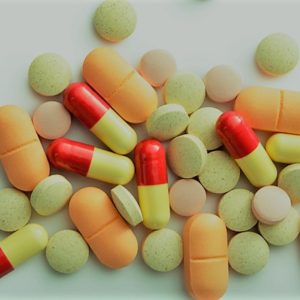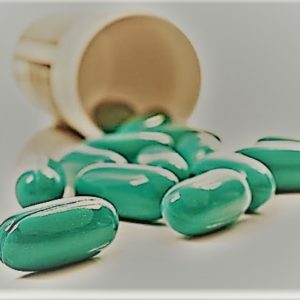Great medical news


Above photos: These drugs are cholinesterase inhibitors that can help with the cognitive and behavioral symptoms of Alzheimer’s diseases
A cardiologist friend of mine in Indiana, who had referred countless patients for open-heart surgery to me in the 80s and 90s, had a freak accident at home that broke his neck (like actor Christopher “Superman” Reeves, who fell from a horse), which left him quadriplegic, unable to breathe on his own, with total paralysis of his arms and legs. Connected to a ventilator, he lived for about 10 years. He retained a mind that was brilliant and as clear as ever to the end. Unfortunately, the injury to his spinal cord remained “without a cure,” even to this day.
A potential hope for patients with broken spinal cord, with paralysis from the hip down (paraplegia) or from the neck down (quadriplegia) might be in the offing, albeit this could be years down the line. Human neural (nerve) stem cell can restore mobility in cases of chronic spinal injury,” suggested a study from the University of California Irvine, following successful results of transplanted human stem cells in mice, which recovered from their 30-day laboratory-induced spinal cord injury.
This encouraging preliminary findings in stem cell therapy for spinal cord injury is indeed promising. The therapeutic strategy will need more laboratory confirmations, and later, application to human clinical trials, before the final verdict is made. At least, it is a spark of hope.
* * *
Vitamin C has been found to rapidly improve a person’s mood state, especially among acutely hospitalized patients, in a double-blind clinical study at Montreal’s Jewish General Hospital and the affiliated Lady Davis Institute for Medical Research. While Vitamin C (L-ascorbic acid or L-ascrobate) supplements are available in pills, this anti-oxidant and essential nutrient is abundant in these plant sources, in the order of level of vitamin C content: kakadu plum, camu camu, rose hip, acerola, jujube, red pepper, red hot chili, guava, parsley, broccoli, kiwifruit, brusseks sprouts, papaya, strawberry, orange, kale, lemon, melon, cantaloupe, lime, mango, blackberry, potato and other fruits and vegetables. The phyto-phenols and Vitamin C in these foods also boost immunity.
* * *
The gene that increases an individual’s risk of developing Alzheimer’s disease, tagged MTHFD1L, a gene on chromosome 6, has been identified in a genome-wide study at the John P. Hussman Instituite of Genomics at the University of Miami Miller School of Medicine. This discovery will help the scientific community understand Alzheimer’s better and potentially develop a marker for higher risk persons, and hopefully, discover a preventive regimen, if not an effective treatment for this tragic disease.
Today, there are drugs called cholinesterase inhibitors that can help with the cognitive and behavioral symptoms of Alzheimer’s disease “by blocking the enzyme acetylcholinesterase, which breaks down a neurotransmitter (brain chemical) acetylcholine, which plays an important role in cognitive functions like thinking and remembering.” Low acetylcholine levels are causes memory loss. Some of these medications include Aricept (donepezil), for all stages of Alzheimer’s; and, Exelon (rivastigmine) and Razadyne (galantamine), for early and middle stage of Alzheimer’s. As the dementia progresses, the level of acetylcholine goes down and even these medications may not be beneficial anymore.
* * *
Medical Xpress reports that “researchers at the USC Viterbi School of Engineering are using generative adversarial networks (GANs)—technology best known for creating deepfake videos and photorealistic human faces—to improve brain-computer interfaces for people with disabilities.”
The team was able to “teach an AI to generate synthetic brain activity data which were fed into a machine-learning algorithms to improve the useability of brain computer interface (BCI), which analyzes a person’s brain signals and translating that neural activity into commands, allowing the user to control digital devices using only their thoughts.”
These devices can obviously help improve the “quality of life for people with motor dysfunction or paralysis, and those fully conscious but unable to move or communicate.”
* * *
Those who hold their breaths during sleep, snorers or not, and wake up several times during the night gasping for breath, most likely have Obstructive Sleep Apnea (OSA). They are usually sleepy and feeling tired by noon. Undiagnosed and untreated, OSA increases the risk for heart disease, diabetes, high blood pressure, Alzheimer’s, and even cancer, due to chronic lack of oxygen during those breath-holding (apneic) moments, which could be dozens, a hundred. A sleep test is needed to confirm the diagnosis. The good thing about OSA is that today, there is a proven, fully beneficial, treatment for it: CPAP (Continuous Positive Airway Pressure) Machine. Users love it and feel more secure using it for a restful sleep every night.
* * *
Anger and any form of stress, especially emotional, can make one ill. Psychosomatic disorders are real. Anger, for instance, causes the release of stress hormones, like adrenalin, cortisol and noradrenalin, which increase heart rate, breathing, body temperature, muscle tone, sweating, alertness, and elevated blood pressure. All these also lead to constriction of arteries in most organs, lessening their blood supply, channeling a large share of blood supply to the muscles, as a part of the body’s defense mechanism. This is normal physiology when anger sets in, as it prepares the body for fight or flight. Anger also depresses the immune system, slows down digestion, and the alertness it causes impairs sleep. Chronic emotional stress and anger do cause a lot more illnesses, and aggravate existing diseases (depression, heart condition, impending stroke, diabetes, high blood pressure, fibromyalgia, insomnia, even allergies and skin diseases, etc.).
On the other hand, positive thoughts, laughing, listening to soothing music, relaxing, loving and the knowledge of being loved, spending quality time with family and friends, feeling happy and having serenity and peace, all these allow the body’s built-in “pharmacy” to produce the good hormones, called endorphins (from the word endogenous, meaning produced by the body, and the word morphine, which is like opium, heroin, and the medical pain killer, morphine). This gives us a high when produced by our body in abundance, circulating in our blood stream. Endorphins switch OFF the nerves in the frontal lobe of the brain, inhibiting pain, and this part of the brain is then flooded with endogenous dopamine, resulting in the sense of euphoria, the reason why many are addicted to drugs.
Let’s encourage our mind and body to produce these endorphins more often and be addicted to them, for a cheaper, healthier, safer, and legal way of getting high.
Philip S. Chua, MD, FACS, FPCS, a Cardiac Surgeon Emeritus based in Northwest Indiana and Las Vegas, Nevada, is an international medical lecturer/author, and Chairman of the Filipino United Network-USA, a 501(c)3 humanitarian foundation in the United States. Websites: FUN8888.com and philipSchua.com Email: scalpelpen@gmail.com




Leave a Reply